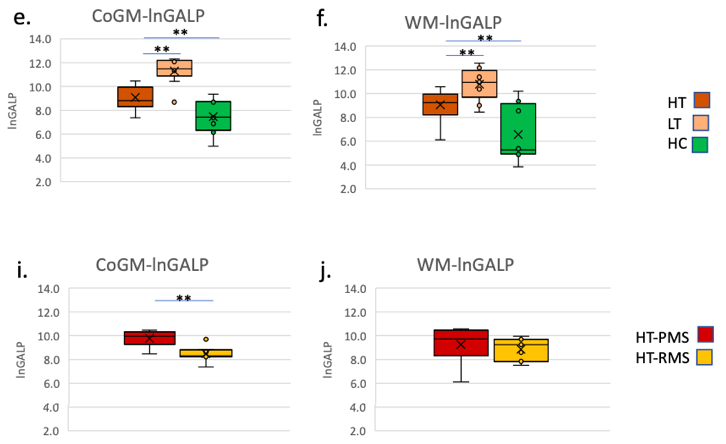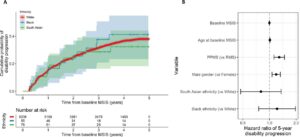
When patients on HTs with progressive MS (PMS) were compared to those with relapsing MS (RMS), patients with PMS showed elevated microglial activation in cortical grey (i), but not white (j), matter.
Tarun Singhal, et al. – Harvard Medical School.
This study found that patients on high-efficacy disease-modifying therapies (DMTs; HTs), such as fingolimod, have reduced levels of microglial activation compared to patients on low-efficacy DMTs (LTs), such as glatiramer acetate, that are still higher than those in healthy controls. When the HT group is divided into patients with progressive (PMS) or relapsing MS (RMS), microglial activation was higher in the cortical grey matter of the PMS group but the same in white matter, reflecting the role of “smoldering” inflammation in grey matter for driving PMS. These results affirm the need to develop DMTs that are capable of controlling “smoldering” inflammation to combat disease progression, as even DMTs that are highly effective at controlling relapses do not adequately address microglial activation.




